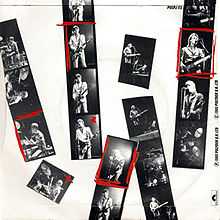Going Underground
| "Going Underground" | ||||
|---|---|---|---|---|
 | ||||
| Single by The Jam | ||||
| B-side | Dreams of Children | |||
| Released | 10 March 1980 | |||
| Format | 7" vinyl | |||
| Recorded | December 1979 | |||
| Genre | Punk rock, Mod Revival | |||
| Length | 2:50 | |||
| Label | Polydor (UK) | |||
| Writer(s) | Paul Weller | |||
| Producer(s) | Vic Coppersmith-Heaven | |||
| The Jam singles chronology | ||||
| ||||

"Going Underground" is the first British number-one chart single by The Jam, released in March 1980. It went straight in at number one, a rare feat at the time, and spent three weeks at the top. It was the first of three instant chart-toppers for the group.
Song profile
"Going Underground" was not released on any of the band's six studio albums, although it has appeared on many compilations and rereleases since then. The single's B-side was "Dreams of Children", which had originally been intended to be the A-side; following a mix-up at the pressing plant, the single became a double-A-side, and DJs tended to choose the more melodic "Going Underground" to play on the radio.
In March 2005, Q magazine placed "Going Underground" at number 73 in its list of the 100 Greatest Guitar Tracks, and in October 2006 placed it at number 98 in their list of the 100 Greatest Songs Ever.
Lyrics
The song includes several indictments of the British policy on arms, and challenges its relative emphasis compared with social provision. It also points a telling finger at the "public" (i.e. electorate).
You want more money of course I don't mind / To buy nuclear textbooks for Atomic crimes
The song also blasts the idea of using money, that could be spent on healthcare, on weapons:
You'll see kidney machines replaced by rockets and guns
References
External links
| Preceded by "Together We Are Beautiful" by Fern Kinney |
UK number one single 22 March 1980 - 5 April 1980 |
Succeeded by "Working My Way Back to You" by The Detroit Spinners |
| ||||||||||||||||||||